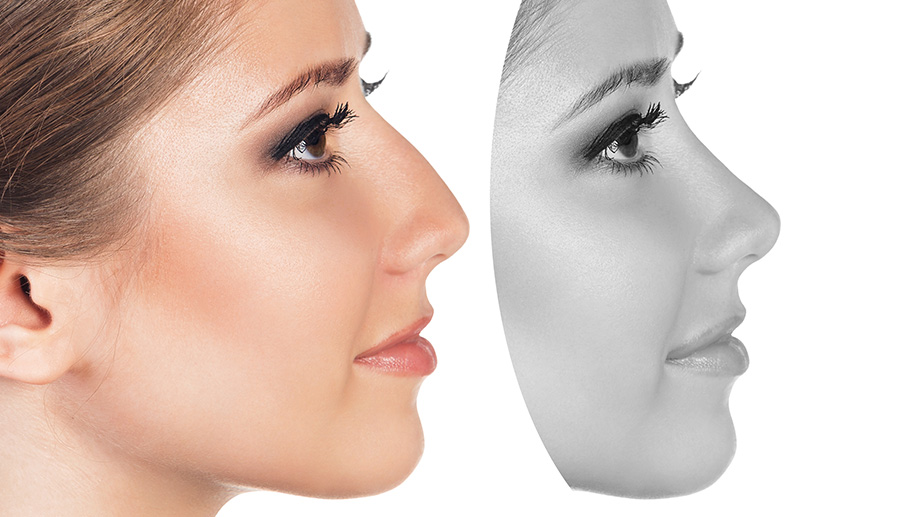
Short & Upturned Nose
Rinoplastinin arkasındaki açıklama , burnun keman gibi çok kısa, kalkık ve oldukça doğal olmayan bir uyum göstermesidir. Burun estetiği , burnu germek ve burnun daha doğal görünmesini sağlamak için yapılabilir.

Rinoplastinin arkasındaki açıklama , burnun keman gibi çok kısa, kalkık ve oldukça doğal olmayan bir uyum göstermesidir. Burun estetiği , burnu germek ve burnun daha doğal görünmesini sağlamak için yapılabilir.

A few noses demonstrate their undesirable components for the most part from the front perspective. One of the more regular situations is a nose with a tip that is too wide or too round or an extension that shows up too wide.
        Rectification of a wide, round, or square shaped tip requires cautious reshaping and chiseling of the tip ligaments keeping in mind the end goal to lessen tip estimate and enhance tip definition. In the meantime, the specialist must be mindful so as to not disturb the basic backing of the nose so that the nasal entries don’t get to be blocked. Redress of a wide hard scaffold frequently requires internal repositioning (through a controlled crack) of the nasal bones.

Numerous undesirable components of the nose might be enhanced through restorative surgery. Noses might be made smaller, straighter, longer, or shorter.
Mounds might be evacuated and the shape, size, edge, and meaning of the tip of the nose might be modified. Breathing issues, for example, those brought on by a veered off septum, nasal valve fall, or broadened turbinates might likewise be amended in the meantime as the corrective changes.
The specialty of rhinoplasty is in acquiring the coveted changes, while keeping up a characteristic appearance to the nose. Nasal plastic surgery might be performed for entirely restorative reasons (corrective rhinoplasty), for entirely breathing reasons (septoplasty), and all the more ordinarily for a blend of both (rhinoplasty + septoplasty). Rhinoplasty might be performed whenever after facial development has been finished. This for the most part deciphers into age 15-16 for ladies and age 16-17 for men.

Causes, Exercises and Surgery
What’s a crooked nose?
Just like humans, crooked noses come in all shapes and sizes. A crooked nose refers to a nose that doesn’t follow a straight, vertical line down the center of your face.
Having a crooked nose may be a result of an underlying issue with the bones, cartilage and tissue that are inside your nose. A screwy, hilter kilter, or digressed nose can startle the whole face. The reason for a slanted nose might be the ligament of the septum. The outside ligaments of the nose or hidden asymmetry of the face all in all.
The degree of crookedness may be very subtle or more dramatic, depending on the cause. Deviation of the septum, if extreme, can push the lower portion of the nose unbalanced. Noses that have been crooked nose can likewise be slanted as a consequence of the uprooted nasal bones that recuperated in an abnormal position.
There are two main types of crooked noses. One type is caused by an issue within the complex system of bones, cartilage, and tissue that make up your nose.
This may be the result of several things, including:
-Birth defects
-Injuries, such as a broken nose
-Surgery on your nose
-Severe infections
-Tumors
-Depending on the cause, your nose may be C-, I-, or S-shaped.
The other type of crooked nose is caused by a deviated septum. Your septum is the internal wall that separates your left and right nasal passages from each other. If you have a deviated septum, it means this wall leans to one side, partially blocking one side of your nose. While some people are born with a deviated septum, others develop one following an injury.
In addition to making your nose look crooked, a deviated septum can also cause:
-Nosebleeds
-Loud breathing
-Difficulty sleeping on one side
Work with your doctor to figure out what’s causing the crooked shape in your nose. A Board Certified Plastic Surgeon will help you understand what can be improved in terms of health and aesthetics. This will make it easier to determine the best treatment option.